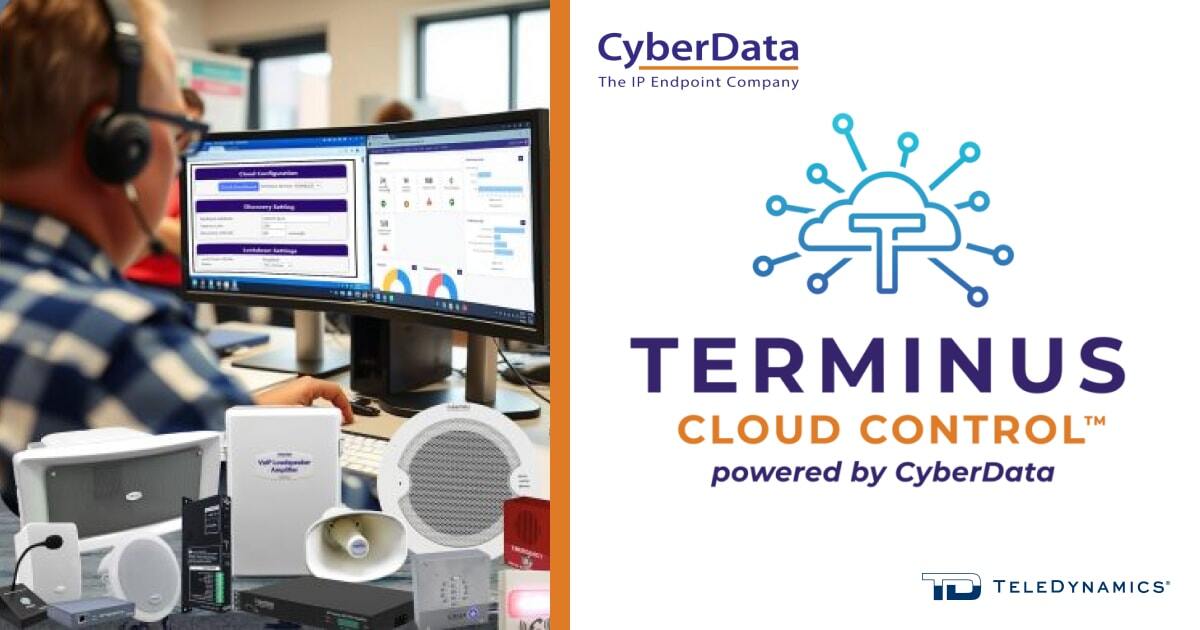Now that video communications have become a defining part of modern collaboration, it’s natural to wonder whether traditional voice-only VoIP systems still have a meaningful place in today’s environment.
For businesses evaluating their communications strategy, this question matters. Understanding where voice is headed helps leaders make informed decisions about infrastructure, reliability, user preferences, and long-term planning. In this article, we take a look at voice and video and explain why these two technologies will continue to coexist well into the future.
Read More
Topics:
VoIP,
Grandstream,
Trends,
Videoconferencing,
Yeastar,
Network Infrastructure
When a customer complains that “the phones keep cutting out” or that “the video meetings are glitchy,” you know the pain of trying to track down the cause. Is it the internet provider? The PBX? The router? Maybe a burst of packet loss somewhere between branch offices? By the time you find the culprit, the customer’s already frustrated.
That’s why forward-thinking telecom pros are turning to a smarter, more proactive way to catch problems before users ever notice them. It’s called synthetic monitoring, and instead of waiting for real users to experience issues, it creates artificial “test calls” and “test meetings” that continuously check system performance from different points on the network. Think of it as a team of virtual users constantly making sure that every part of your VoIP and UC infrastructure is healthy and ready for the real thing.
In this article, we explain how synthetic monitoring works, how it differs from traditional passive monitoring, and why it's becoming an essential part of reliable VoIP and UC deployments. Understanding this approach can help you reduce downtime, speed up troubleshooting, and deliver a better experience all around.
Read More
Topics:
QoS,
VoIP,
Troubleshooting
When you place a VoIP call or join a video meeting, the experience feels seamless—your voice and video just work. Behind the scenes, however, an invisible framework of computing models is orchestrating that experience, ensuring low latency, high reliability, and scalable performance.
Three of the most important concepts driving this evolution are cloud, edge, and fog computing. Each represents a distinct way of deploying compute power, and understanding their differences is key to building resilient VoIP and UC systems.
In this article, we demystify these models, explain how they shape the future of communications technologies, and show you where each one fits best in real-world deployments.
Read More
Topics:
VoIP,
Trends,
Network Design,
Unified Communications,
WAN Technology,
Network Infrastructure
When you make a VoIP call or join a UC meeting, you click the “call” or “join” button, and everything just works! You seamlessly communicate with your remote employees, partners, and customers. It seems like magic, but behind the scenes, a vital technology is making all this possible: the Border Gateway Protocol (BGP).
BGP is the de facto routing protocol that governs and enables data to traverse the worldwide web. For VoIP and UC professionals, understanding BGP matters because it directly affects how voice, video, and messaging traffic reaches its destination. This is true for all communications taking place over the internet, such as that between users, SIP trunk providers, or cloud-based UC and VoIP platforms.
In this article, we look behind the scenes to see what BGP is, how it directs traffic across multiple networks and ISPs worldwide, and how its operation directly affects reliability and service availability for real-time applications.
Read More
Topics:
VoIP,
Unified Communications,
Protocols & codecs
CyberData has become a leading SIP-enabled VoIP device provider for facility-wide communication, paging, and notification systems. Now, CyberData's portfolio is even better with the introduction of its notification and management platform called Terminus Cloud ControlTM.
This cloud-based controller service is designed to simplify emergency and non-emergency notifications, as well as the management, configuration, and monitoring of CyberData's SIP-based devices. In this article, we review this service, show how it works, and highlight its significant features and capabilities.
Read More
Topics:
VoIP,
SIP,
Cloud,
Unified Communications,
Facility Management,
CyberData
Routing is a vital part of network operations, and employing it correctly is of utmost importance for any enterprise network.
In the context of networking, routing is the process by which data packets are directed to their final destination as they travel from node to node. There are many aspects of routing design that can affect general network traffic patterns and particular network services. UC and VoIP services can be adversely affected if routing design does not take into account their special characteristics.
This article examines various aspects of routing implementation to see how it can potentially affect real-time services. We also look at what specific design aspects you should consider to ensure the proper operation of such services.
Read More
Topics:
VoIP,
Troubleshooting,
Routers,
Network Design,
Unified Communications,
Network Infrastructure,
Protocols & codecs
Network services such as voice over Internet Protocol (VoIP), unified communications (UC), video conferencing, and collaboration systems are fundamentally dependent on the quality and robustness of the underlying network infrastructure. When deploying an enterprise network, it is crucial to implement sound network design principles to guarantee optimal performance, reliability, and scalability.
Various aspects of enterprise network design work together to achieve high levels of network performance. This article focuses specifically on quality of service (QoS) and some best practices associated with it.
Read More
Topics:
QoS,
VoIP,
Network Security,
Network Design,
Unified Communications
DHCP is best known as the protocol that automatically assigns IP addresses to hosts that connect to a network. It is one of those protocols that we don’t often think about because it functions in the background — users are completely oblivious to its operation, just enjoying its convenience and flexibility.
However, DHCP is about more than automatic address allocation, especially for VoIP and UC devices such as IP phones and video terminals. In this article, we explore the operation of DHCP and the specialized options it provides for VoIP and UC applications, some of which you might not know about!
Read More
Topics:
IP PBX,
VoIP,
SIP,
Network Design,
IoT,
Unified Communications,
Protocols & codecs
The P-Series phone system is Yeastar’s flagship unified communications product, delivering state-of-the-art UC services to both on- and off-premises employees with the versatility of three installation modes.
It also integrates advanced contact center (CC) solutions right out of the box. The Yeastar P-Series helps businesses boost customer engagement while improving operational effectiveness within their workflows.
In this article, we showcase the deep CC integration in Yeastar's P-Series products and highlight the features that we found most impressive.
Read More
Topics:
IP PBX,
Business Telephone System,
VoIP,
Product Review,
Yeastar,
Unified Communications
The VOICE incentive policy is Yealink's 2024 new deal registration program. It offers additional discounts on quantity orders of specific Yealink telephone and wireless headset models. The discounts are substantial and depend on the number of units per order, the type of device being ordered, and the end customer's industry sector.
Here are the details.
Read More
Topics:
SIP Phones,
Business Telephone System,
VoIP,
Yealink,
Headsets,
Unified Communications

















